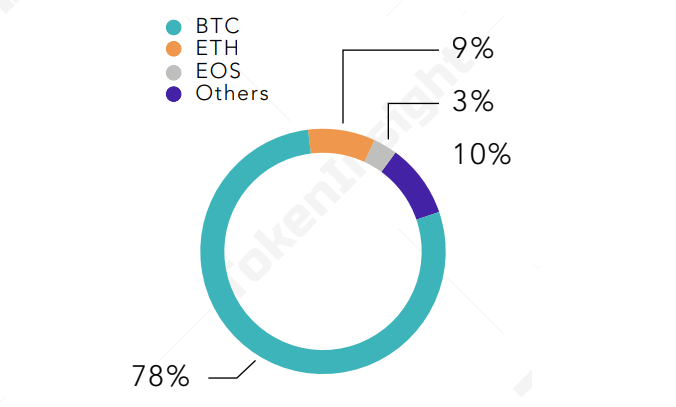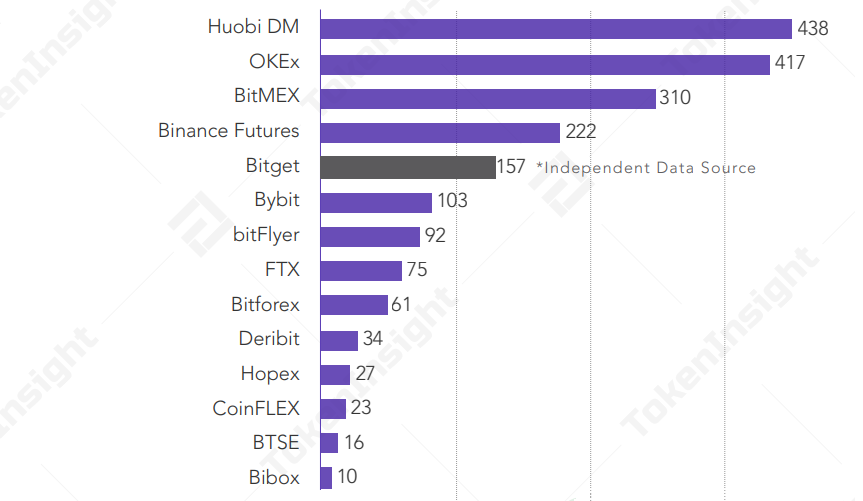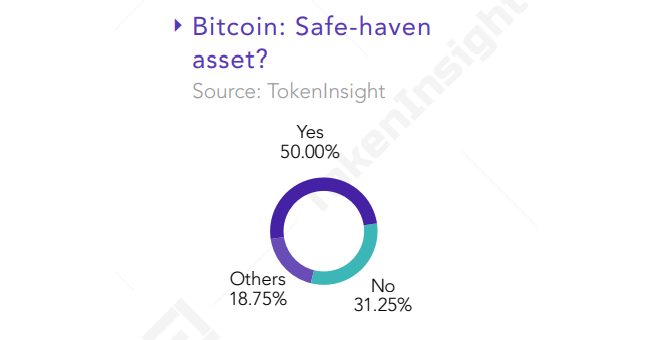Recent data on the cryptocurrency derivatives market indicates that there is still steady growth despite the economic crisis that the world is facing. Trading volume is up from 2019 and many entities are planning to bolster their infrastructure and services.
TokenInsight’s most recent 22-page report indicates that, despite the economic fallout as a result of the COVID-19 pandemic, the derivatives market is holding itself together reasonably well. Bitcoin (BTC), Ethereum (ETH), and EOS (EOS) have accounted for more than 90 percent of the market’s turnover.
The large volumes being reported are due in part as a result of the number of exchanges that have launched related investment vehicles. Both NASDAQ and JP Morgan officials have even indicated that they will move into offering cryptocurrency futures and options, a development that will underscore the conviction driving this niche market forward.
Cryptocurrency Trading Volume Data Points to Growth
The most notable statistic from the report is a staggering $2 trillion turnover of the cryptocurrency derivatives market in Q1 2020, exceeding the 2019 quarter average by 314 percent.


Is Bitcoin Still Seen as a Safe Haven?
Bitcoin’s safety as a store of value has been a talking point which has seen much contention in recent times, exactly half of those surveyed still believe that BTC remains a safe haven.
Infrastructure Development, Standards, and Compliance
A theme of overall improvements being made to the foundation of this market is clear in the report. Sam Bankman-Fried, Chief Executive Officer (CEO) of FTX, believes that the industry should focus on improving risk control, user interface, fiat currency support, and data quality — a view shared by officials from Deribit, Bitget, and OKEx. The latter’s Chief Strategy Officer (CSO), Kun Xu, believes that the market has yet to establish a unified standard, which will be an important development as the market matures.
The latter’s Chief Strategy Officer (CSO), Kun Xu, believes that the market has yet to establish a unified standard, which will be an important development as the market matures.
Similar to the lack of stock index futures and index ETFs in traditional markets, the reason is that there are too few basic assets with qualities, and the classifcation and tracking ratings of basic assets have not established a unifed standard for the entire market.However, Greg Dwyer, who heads Business Development at BitMEX, claims there is a tentative return to normalcy:
All asset classes took a riskoff approach, however in the cryptocurrency derivative space we are starting to see open interest pick up again and spreads tighten to pre-crisis levels that indicates confdence is coming back into the wider cryptocurrency markets.
Disclaimer
In adherence to the Trust Project guidelines, BeInCrypto is committed to unbiased, transparent reporting. This news article aims to provide accurate, timely information. However, readers are advised to verify facts independently and consult with a professional before making any decisions based on this content. Please note that our Terms and Conditions, Privacy Policy, and Disclaimers have been updated.

Rahul Nambiampurath
Rahul Nambiampurath's cryptocurrency journey first began in 2014 when he stumbled upon Satoshi's Bitcoin whitepaper. With a bachelor's degree in Commerce and an MBA in Finance from Sikkim Manipal University, he was among the few that first recognized the sheer untapped potential of decentralized technologies. Since then, he has helped DeFi platforms like Balancer and Sidus Heroes — a web3 metaverse — as well as CEXs like Bitso (Mexico's biggest) and Overbit to reach new heights with his...
Rahul Nambiampurath's cryptocurrency journey first began in 2014 when he stumbled upon Satoshi's Bitcoin whitepaper. With a bachelor's degree in Commerce and an MBA in Finance from Sikkim Manipal University, he was among the few that first recognized the sheer untapped potential of decentralized technologies. Since then, he has helped DeFi platforms like Balancer and Sidus Heroes — a web3 metaverse — as well as CEXs like Bitso (Mexico's biggest) and Overbit to reach new heights with his...
READ FULL BIO
Sponsored
Sponsored

